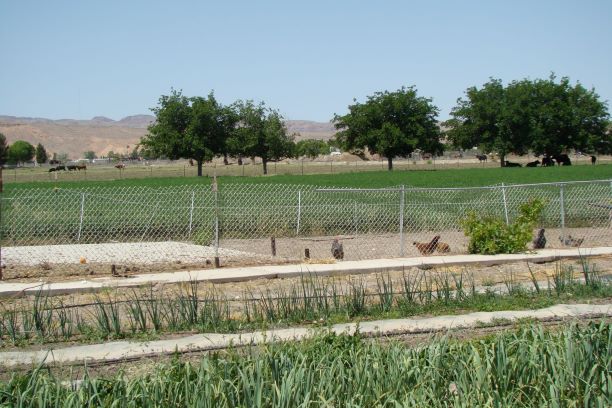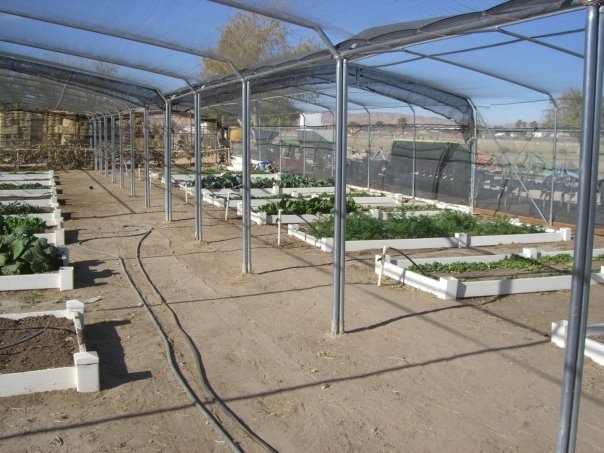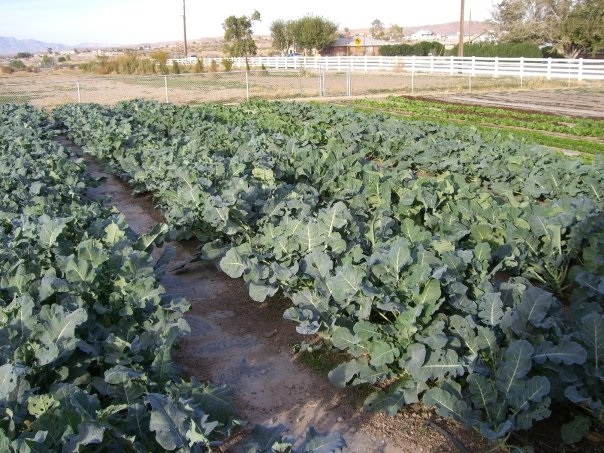Journal of the NACAA
ISSN 2158-9429
Volume 12, Issue 1 - June, 2019
Small Farm Food Marketing in Southern Nevada: Where Are the Roadside Stands?
- Bishop, C. , Extension Educator, University Of Nevada Cooperative Extension
Gatzke, H., Extension Educator, University Of Nevada Cooperative Extension
ABSTRACT
Years of educational programming with local farms identified barriers and possible solutions to the lack of development of a local food industry in southern Nevada. Despite small farms starting production of local food and a large population in southern Nevada, there is a lack of local food industry success. The collection of information from ten years of evaluation results from conferences, workshops, one-on-one meetings, and market studies found dominant and reoccurring barriers and solutions concepts. The barriers of isolation of farming communities, heat, and perceptions of food production need to be addressed for food production to thrive locally. Local food needs support from government agencies, Cooperative Extension, non-profits and others to grow knowledge and awareness of southern Nevada local food demand.
Introduction
Roadside stands are often a simple and cost-effective way for small farms to market their food to the public directly. Unlike many communities, it is rare to find roadside stands in southern Nevada.
Southern Nevada remains far behind other regions of the United States in the production, adoption, and development of a local food industry. Nationally, small and intermediate farms (91% of farms) struggle to be economically viable with an average of less than $8200 of farm income per year and live from off-farm income (Economic Research Service, 2016). Despite the large population of residents and visitors that could be serviced by a local food industry, the amount of food produced and sold locally in Nevada is small. According to the current listing of certified producers from the Nevada Department of Agriculture website, only ten produce farmers are in the Las Vegas metro area with an additional 21 producers within a 150-mile radius from the center of the metro area in Clark County and the adjoining counties (Nevada Department of Agriculture, 2018). The amount of fresh food produced and consumed locally in southern Nevada is so negligible that the Nevada Department of Agriculture does not identify vegetables and fruit as one of the major agricultural products for the area (Nevada Department of Agriculture, 2017). Work in this field by University of Nevada Cooperative Extension identifies the unique barriers for producers to market their local foods in Southern Nevada.
Methods
A study of ten years of work by two Extension Educators in the Southern Nevada local food industry identified the dominant reoccurring barriers to success for their clients. Information and data came from existing and prospective small farmers during 13 conferences, 22 workshops, 321 one-on-one meetings, 26 farmer group discussion sessions and nine market surveys from 2008 to 2018. Pre-post test and post-post evaluation data for individual workshops and discussion groups determined that attendees gained in knowledge; planned use of knowledge; and expressed their needs for education in additional subject matter and mentoring. Topics for workshops and conferences came from the evaluation results to address barriers to local food business success. Mentoring through one-on-one meetings allowed identification and addressing of production and economic barriers. Discussions and analysis of farm production systems improved production operations. Enterprise budgets were developed in one-on-one meetings for farms requesting the help to establish viable farm plans. The one-on-one meetings provided the most valuable information on existing barriers and had the greatest qualitative impact for the farms since the discussions delved deeper into actual situations with multiple variables for individual farms. Data from market studies of chefs’ and farmers market consumers’ opinions and the tracking of local food products in natural grocery stores provided a market perspective to barriers (Curtis et al., 2009). The progression of information on barriers to farm success was analyzed to identify the key barriers for local food farms in southern Nevada. Data from Census rolls and Nevada State Demographics were collected to outline the geography of the area (Nevada State Demographer’s Office, 2018; Southern Nevada Consensus Housing Unit Count, 2018).
Results
This paper provides a synthesis of input from growers to identify three major barriers for local food producers, and identifies a set of possible solutions. The three common barriers that farms may face with local food in Southern Nevada derive from the desert environment and geography of 1) isolated farms, 2) heat and 3) the lack of knowledge that food can grow in southern Nevada.

Figure 1. Farm in rural Southern Nevada.
Barrier: Isolation of farms from populated areas
Demographics show 94.7% of the population in southern Nevada resides in the Las Vegas metropolitan area (Southern Nevada Consensus Housing Unit Count, 2018), which consists of 600 square miles of the 36,693 square mile area in Southern Nevada (Clark, Lincoln, and Nye Counties) (Nevada State Demographer’s Office, 2018). The majority of these residents have moved in over the last 20 years and never leave the urban area.
Possible solution: Sell locally
Most farm locations are in low populated rural valleys between desolate mountain ranges. Although some of these farms participate in or have tried road stands and rural farmers markets in their small local communities, they have found that the sales do not reach high enough value to sustain the business and in many cases pay for the time and costs incurred. Setting up a roadside stand in the surrounding small towns can be prohibitive in cost because the small amount of land in towns on highways is rare and high priced in those jurisdictions that allow for off-site sales.
Possible solution: Go to the urban center
Farms in Southern Nevada have to seek markets beyond the local road stand and farmers markets to provide enough income to sustain the business. The isolation of farms results in having higher costs of transporting their food to larger market centers. The most common distances farms transport their local foods to the metropolitan areas in Nevada is 60 to 200 miles.
Possible solution: Create urban farms
With only four inches of rain per year, the high water costs in this desert metropolis (Las Vegas) are prohibitive; zoning laws are becoming more restrictive and less agriculturally friendly, resulting in few sustainable traditional urban farms. The establishment of highly water efficient aeroponic and hydroponic indoor growing systems are occurring by several large groups in the Las Vegas area.
Barrier: Heat
Low humidity, hot temperatures, and intense winds rapidly deteriorate fresh foods. Producers report that their produce rapidly wilts even if placed on ice within 15 minutes. All fresh food must be moved quickly between refrigerated containers from the field, farm, transportation system, distributors (if used) and held in refrigeration at the market. Farm stands become costlier because they must have a cooling system. At farmers’ markets, there can be significant losses of fresh food if sales are not brisk. Farmers have reported losses when delivering their produce; while using distributors, there have been losses due to temperatures rising above safe ranges for too long during line ups to commercial customers. The cost of refrigeration can be substantial.
Possible solution: Use of inexpensive cooling
At the suggestion of Cooperative Extension, many Nevada farms have made use of the “Pack ‘N Cool” on the farms and in their mode of transport to reduce costs. North Carolina State developed this very reasonably priced and effective mobile refrigeration trailer (North Carolina State Plant for Human Health Institute, 2012).
The hot, dry climate also affects the seasons in which the food becomes available. The heat of the summer can significantly reduce production, especially in lower elevation areas closer to the Las Vegas region. The large swings of hot days and cool nights in higher elevation areas can considerably change which crops grow, and the seasons they become available. The market that wants local foods finds these unusual changes in availability confusing, especially compared to their main flow of products coming from the California market (Gatzke, 2012).
Possible solution: Use of season extension
Southern Nevada farmers need to extend fall and spring seasons against the heat. They have utilized hoop houses, but instead of plastic covering to retain heat, they cover them with shade cloth to assist with mitigating the heat of the sun’s rays.

Figure 2. Shade house in Southern Nevada.
Barrier: Perception of no food production in the desert
The greatest barrier to selling local foods in southern Nevada is the perception that food does not grow in the desert (Gatzke, 2012). The majority of the population in the Las Vegas area have moved in from other regions, and when they see the desert, they assume there is no capability of food production. Consumers indicate that they wish to have access to local foods in southern Nevada, but do not believe they exist in Nevada (Curtis, et al., 2009; Curtis et al., 2008). Reports from farmers’ views of market patrons, discussions with chefs and current consumer comments suggest this situation remains unchanged ten years later.
Possible solution: Promotion of local foods at farmers’markets
There are some farmers markets in the Las Vegas Metropolis area. Most are social events for the community with craft booths and food trucks dominating the market. Some farmers markets provide produce from California farms. Most producers from southern Nevada have tried selling produce at three or more markets. Most consumers in the markets are not prepared or interested in buying vegetables and fruit during the farmers market. The sales at the markets are too slow to compensate for the cost, time and losses due to heat. Most farmers have quit selling at farmers markets.
Possible solution: Promotion of local foods by high-end chefs
With the upswing of interest in Las Vegas as a food lovers destination, a number of studies have been conducted on farmers market consumers as a result of chefs’ desires to identify the characteristics of the consumers in Nevada (Curtis, et al., 2010; Cowee, Curtis and Gatzke, 2009; Cowee, Curtis, Morris et al., 2009). Famous chefs have succeeded in driving interest in some local food activity in farmers markets for periods of 1-3 years, mainly to markets where chefs have a purchasing time designated. When those chefs changed jobs or left, the local chef followers fell away, and the market died.
Possible solution: Promotion of taste differences
Climate can also have beneficial effects. The southern Nevada climate changes the flavor quality of Nevada products. Farmers and consumers have observed that produce and plants grown in Southern Nevada are more intensely flavored. It is unknown if the change is a result of the extreme temperature, the higher salts in the soils, or if the hot, dry conditions result in a concentration of the flavors due to less water proportional to other crops. According to herb farmers and chef taste tests (Gatzke et al., n. d.), herbs have stronger flavors that should be added in smaller amounts, or they can overpower a dish. Taste tests of Nevada products by chefs have produced very high ratings of local tomatoes, fruits, greens and root crops (Gatzke et al., n. d.). However, consumers have not had the education to look for and recognize this uniqueness of southern Nevada produce, which would create demand.

Figure 3. Fall crops in Southern Nevada
Discussion
Small farms in southern Nevada get support by programs from Cooperative Extension and the state of Nevada. Despite these efforts, the number of farms selling local food is diminishing. The farms that have been operating are struggling to survive or have quit. One Educator worked with over 56 prospective and developing farmers in the last ten years. Nineteen of those did develop farms. However, only two currently continue to grow and sell produce. On a positive note, the number of people approaching Cooperative Extension regarding growing their food has increased. “Successful Desert Gardening” and related workshops have steadily increased attendance. Installation of school gardens and participation in community gardens has also been on the upswing.
Support of local food production may need to come from other sources such as alternative markets, non-profits, and consumer education.
Local Food Support programs
The state of Nevada encourages the development of a local food industry in Nevada (Gatzke, 2012). The Nevada government has taken several steps to support small local farms, especially in the last five years, with industry-wide conferences, more state staff support, initiation of the farm to fork, cottage and craft food laws and programs.
Cooperative Extension has conducted several ongoing programs to support small farms
• Workshops and mentoring from Herds and Harvest - NIFA Beginning Farmer/Rancher grants
• Risk management programs
• Assistance with value-added and other USDA grants
• Food hub creation workshops
• Research into the development of an online sales and distribution network to provide a virtual sales venue and have products delivered directly to prepaid sales, but there is a delay in launch due to shortages in staff, funds, and farms.
Possible other sources of support to grow local food demand
The growth of a local food industry should be through support from other sources. Communities in northwestern Nevada that have non-profits, media, and businesses that provide a concerted effort to support local food have stronger community support and therefore sales for local foods. Similar efforts such as those listed below may develop greater support in southern Nevada:
Slow Food Movement: In southern Nevada, consumers have interest in local foods but no groundswell has established enough of a movement to develop demand, and therefore a forum for southern Nevada produced food to be exchanged. The ‘Slow Food’ movement had a chapter in Nevada briefly, but there has not been an active chapter in the state for many years.
Local food centered publications: Southern Nevada does not have a consumer-driven local food support group. The Reno area in Nevada has the Edible Reno-Tahoe Magazine, which premiered in Spring of 2010, to “promote the local food movement, and point readers to healthy and delicious food and drink in each area they cover” (Edible Reno-Tahoe, 2010). This publication has been a positive influencer for the local food movement in the northwest, but there is no equivalent in Southern Nevada.
Local food Co-ops: A local food non-profit or location that offers or supports sales such as a cooperative does not exist in southern Nevada. Great Basin Community Food Co-op in Reno (western Nevada) began as a buyer’s club in 2005 and opened a storefront in 2007. From their financial report, “In 2017, we are proud to say that we gave more than $450,000 to local and regional farmers, ranchers, and producers! That is in the form of direct payment for food grown in our foodshed, going directly back into our local economy and supporting the 101 local and regional farms and ranches we buy from” (Great Basin Community Food Co-op, 2018).
Specialty grocers: There is currently no natural grocery store specifically promoting southern Nevada products. Discussions with natural grocery stores in Southern Nevada to support a local food movement dwindles quickly because the locations of all decisions for those stores occur in headquarters based in other states.
An educated public: Agencies, farmers, government entities and other interested parties should be encouraging the public to visit farms. Very few Las Vegas residents have seen produce growing or have visited a farm in the area. Possibly the barren desert that surrounds the urban area is intimidating to the city dwellers. Farms are hesitant to add the risk and time required to add public visits. Several farms surrounding Reno provide agritourism activities as part of their farm operations, which creates a stronger connection between farming and the public. There should be some caution because educating consumers that quality local food is available could result in demand quickly exceeding current supply. Supply capability growth is slow since learning to grow food takes time. The situation already exists where California product is brought in quickly to fill the demand and Nevada farm products get lost to the much larger, easy order from California.
References
Cowee, M., Curtis, K., and Gatzke, H. (2009). Nevada farmers market customer profiles. University of Nevada Cooperative Extension Fact Sheet 09-45. Retrieved from https://www.unce.unr.edu/publications/files/ag/2009/fs0945.pdf
Cowee, M., Curtis, K., Morris, R., and Gatzke, H. (2009). Buying local: Perceptions of high-end chefs in Nevada. UNCE Fact Sheet-09-41. Retrieved from https://www.unce.unr.edu/publications/files/ag/2009/fs0941.pdf
Curtis, K., Cowee, M., and Gatzke, H. (2009). “Who is shopping at Nevada’s farmers markets and why?” University Center for Economic Development Technical Report 2008/09-24. Retrieved from http://www.ag.unr.edu/uced/Reports/Technical/08-09-24 percent20Farmers percent20Market percent20report-UCED-Final.pdf
Curtis, K.R., Cowee, M.W., Havercamp, M., Morris, R.L., and Gatzke, H. (2008). Marketing local foods to gourmet restaurants: A multi-method assessment. Journal of Extension 46(6): Article 6RIB2.
Curtis, K.R., Cowee, M.W., Velcherean, M., and Gatzke, H. (2010). Farmer’s market consumers: Is local or organic important?” Journal of Food Distribution Research 41(1): 24-27.
Edible Reno-Tahoe (Spring 2010). From the Editor. Retrieved from http://www.ediblerenotahoe.com/
Economic Research Service, United States Department of Agriculture. (2016). Farm household income and characteristics. Retrieved from https://www.ers.usda.gov/data-products/farm-household-income-and-characteristics/
Gatzke, H. (2012). Developing a Local Food Industry in Nevada. University of Nevada Cooperative Extension Special Publication 12—05. Retrieved from https://www.unce.unr.edu/publications/files/ag/2012/sp1205.pdf
Gatzke, H., Curtis,K., and Morris, R. (n. d.). Unpublished data from IRB approved taste test surveys on local produce by Las Vegas chefs, 2008-2011.
Great Basin Community Food Co-op. (2018). Coop Scoop – Great Basin Community Food Co-op E-news, 2017 Annual Report. Retrieved from https://www.greatbasinfood.coop/enews
Nevada Department of Agriculture. (2017). An economic analysis of the food and agriculture sector in Nevada. Retrieved from http://agri.nv.gov/uploadedFiles/agrinvgov/Content/Resources/Data_and_Reports/econ_analysis_final.pdf
Nevada Department of Agriculture. (2018). Nevada Department of Agriculture producer certification. Retrieved from https://nv.certifyag.com/fsmapublic/
North Carolina State Plants for Human Health Institute. (2012). Pack 'n cool construction summary.” Retrieved from https://plantsforhumanhealth.ncsu.edu/2012/08/20/pack-n-cool/
Nevada State Demographer’s Office. (2018). Retrieved from http://www.nvdemography.org/
Southern Nevada Consensus Housing Unit Count. (2018). August roll close 2016. Retrieved from https://www.clarkcountynv.gov/comprehensive-planning/demographics/Documents/Housing%20Units%20by%20Place%202016.pdf
